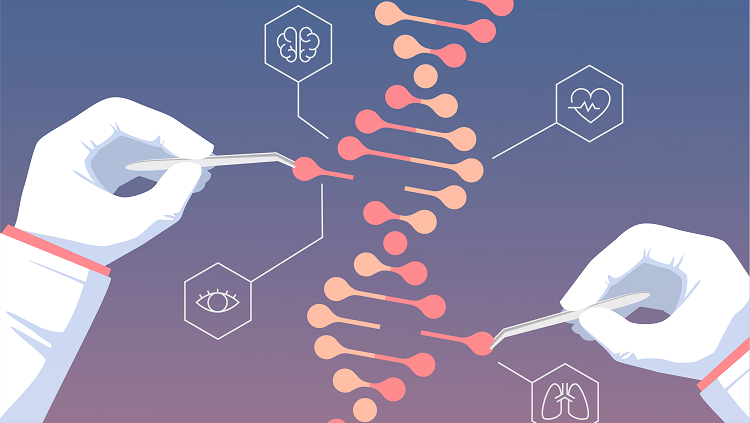Adenocarcinoma remains the most common kind of lung cancer in those diagnosed with the disease. Current targeted therapies – those that hinder cancer cells (without touching healthy tissue) by preventing the molecular changes that drive them to grow – are available for roughly one-third of people with this type of lung cancer. Unfortunately, for the remaining patients with adenocarcinoma, very few treatment options exist.
Earlier this year, in an article published in Cancer Research, researchers found that the co-mutation of STK11 and KEAP1 promote rapid tumor growth in lung adenocarcinoma. In a cohort of lung adenocarcinoma patients, the natural “loss-of-function mutations in STK11 and KEAP1” were tied to the shortest overall survivals. “Patients whose tumors harbor LK mutations across all stages of disease show a median overall survival of 11.8 months, compared to KEAP1 only (34.5 months), STK11 only (34.2 months), or neither (40.2 months).”1
“Ferroptosis is a new type of cell death that was discovered in recent years,” according to a recent article published in Cell Death and Disease, “and is usually accompanied by a large amount of iron accumulation and lipid.”2 A number of recent studies have found that ferroptosis plays a role in the pathophysiological processes of many diseases, including malignant tumors. Strategies to regulate cell ferroptosis and its harsh impact on diseases is a growing “hotspot” in the area etiology and its treatment.
That is why a team of researchers at Memorial Sloan Kettering (MSK) Cancer Center are eager to report a surprise finding they recently came across – “a particular subset of lung adenocarcinomas is aggressive due to a combination of two mutations [in genes KEAP1 and STK11] that allow them to block ferroptosis.”
“We really didn’t know what particular vulnerabilities we would find in these cancer cells,” says MSK physician-scientist Charles Rudin, Chief of the Thoracic Oncology Service, Co-Director of the Fiona and Stanley Druckenmiller Center for Lung Cancer Research, and the paper’s senior author. “
But all of the work we report in this study pointed toward ferroptosis as a key player.”
Explaining the Functionality of the Co-Mutation
The co-mutations of STK11 and KEAP1 foster an environment where tumor cells can grow even though they are being instructed to otherwise induce cell death. When performing an analysis of lung cancer that looked at mutations in tumors, biostatistician, Ronglai Shed, first discovered this co-mutation often occurs in lung adenocarcinomas deemed very aggressive and difficult to treat. Developing a drug that could effectively target this alteration would be a meaningful step forward as this co-mutation is found in 10% of lung adenocarcinomas.
After the unexpected discovery of ferroptosis’s connection to the co-mutation, Dr. Rudin said the “findings suggest that targeting certain proteins that play a role in the regulation of ferroptosis could lead to new treatments for this cancer.”
Enter CRISPR
Gene-editing tool CRISPR was used to create three types of cells. During the process, a graduate student under Dr. Rudin, Corrin Wohlhieter, “knocked out” cells that contained STK11, cells that contained KEAP1, and some cells that contained both. Each of the three cells types were then isolated and studied in lab mouse models. After analyzing the behaviors of the cells, Corrin was able to identify which “genes were activated when STK11 and KEAP1 were lost.”
By creating these knockouts, it allows us to really focus on cells with these mutations and to link any behaviors we observe to the presence or absence of these factors."
The team discovered that the STK11/KEAP1 mutation contained “high levels of proteins already known to make cells resistant to ferroptosis.” One of these proteins is called SCD1 and the team agreed that it is an especially good target for these tumors.
As far as next steps are concerned, several MSK labs are currently looking into strategies for targeting ferroptosis in cancer cells to develop drugs to treat difficult cancers.3
1.Corrin A. Wohlhieter, Allison L. Richards, John T. Poirier, Fathema Uddin, Christopher Hulton, Elisa De Stanchina, Thales Papagiannakopoulos, Triparna Sen, Charles M. Rudin. STK11 and KEAP1 co-mutation cooperatively promotes rapid tumor growth in lung adenocarcinoma [abstract]. In: Proceedings of the Annual Meeting of the American Association for Cancer Research 2020; 2020 Apr 27-28 and Jun 22-24. Philadelphia (PA): AACR; Cancer Res 2020;80(16 Suppl): Abstract nr 1800A.
2. Li, J., Cao, F., Yin, Hl. et al. Ferroptosis: past, present and future. Cell Death Dis 11, 88 (2020). https://doi.org/10.1038/s41419-020-2298-2
3. Tuesday, December 1. “Unexpected Finding Reveals New Target for Aggressive Form of Lung Cancer.” Memorial Sloan Kettering Cancer Center, 1 Dec. 2020, www.mskcc.org/news/unexpected-finding-reveals-new-target-aggressive-form-lung.






